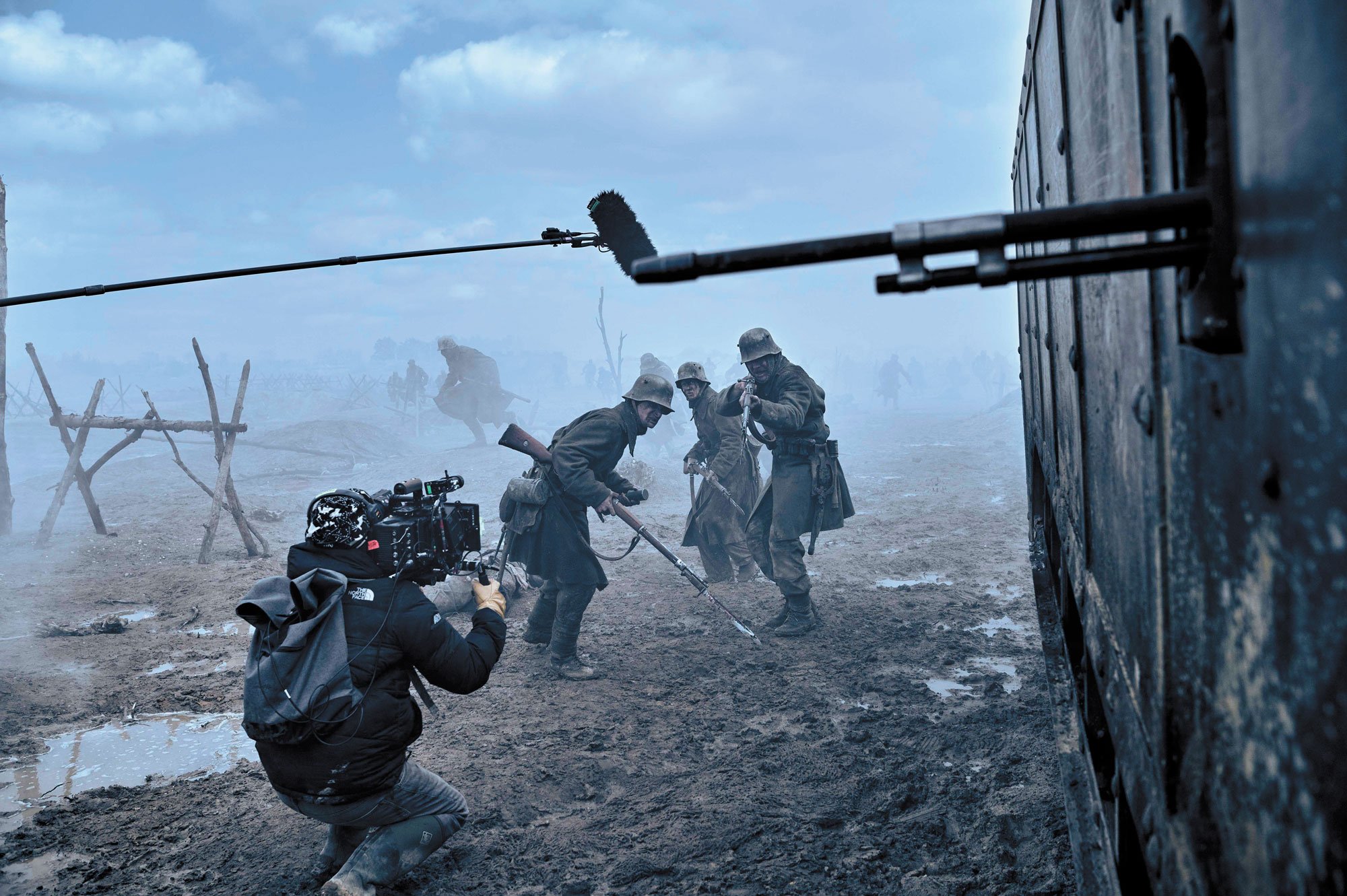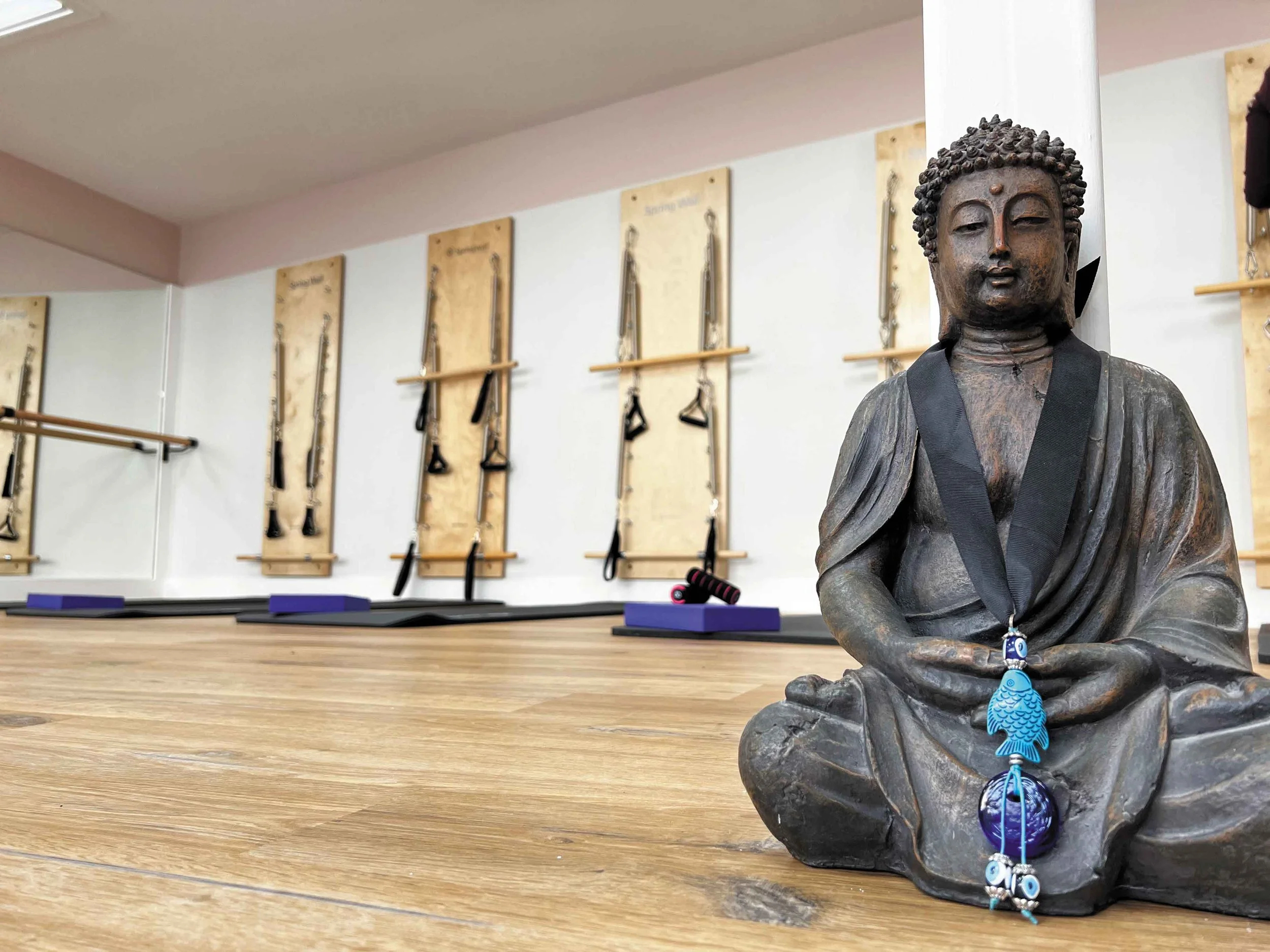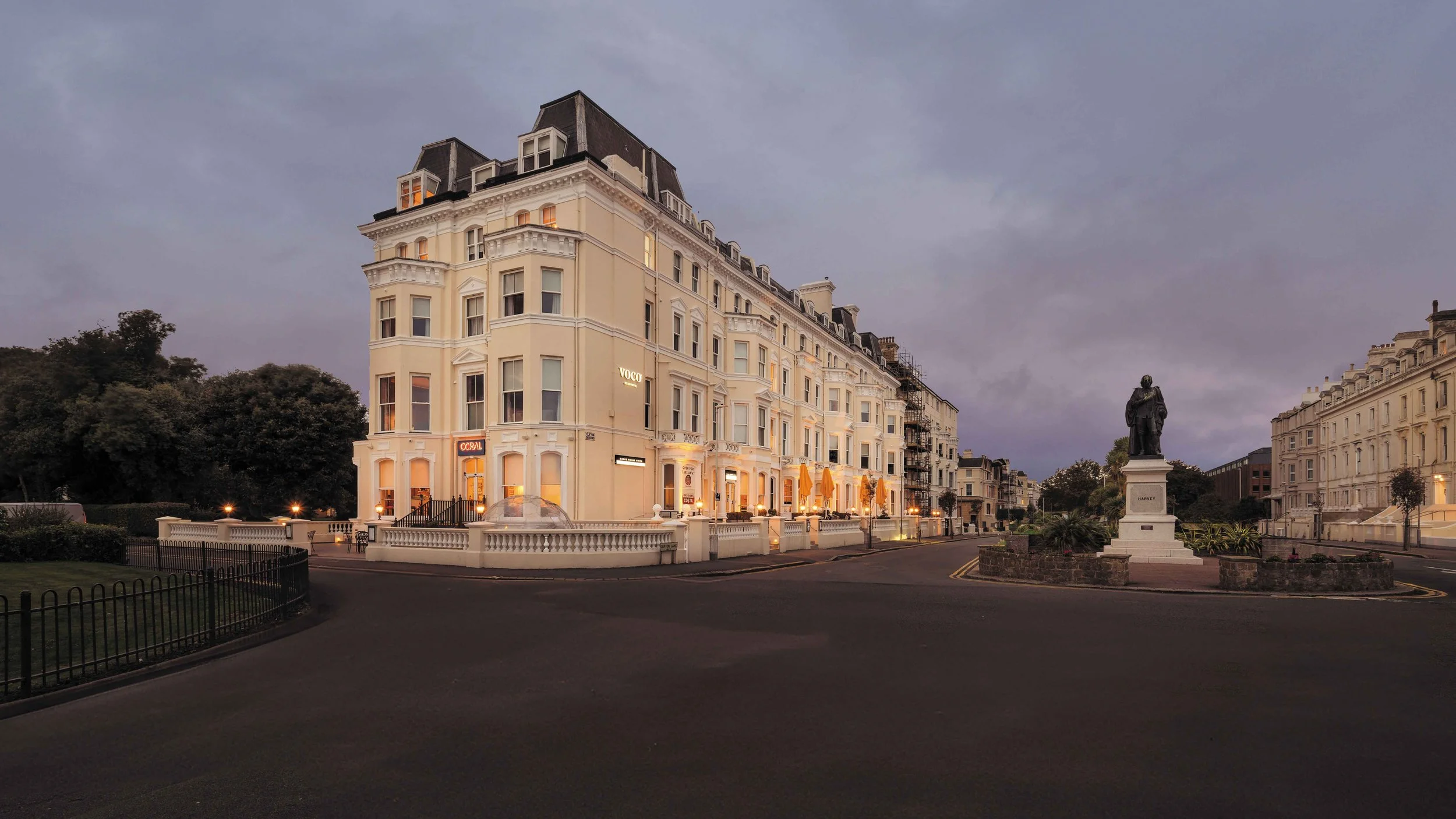INTERVIEW: Kent's 'All Quiet on the Western Front' Cinematographer
Cinematographer James Friend on the Oscar, All Quiet on the Western Front, Star Wars and why Maidstone will always be home…
All Images Credit Netflix
In the space of a month, James Friend won a BAFTA and an Oscar for best cinematography for his work on All Quiet on the Western Front. Two months later and he still can’t quite believe it…
“It was completely unexpected,” admits a down-to-earth James, shaking his head slightly at the memory of his recent wins. He’s speaking to ‘cene Magazine on a rare stop-off at his home near Pinewood Studios in Buckinghamshire – he’s been away working on upcoming Disney+ show The Acolyte, the latest to join the ever-expanding Star Wars franchise. “It’s pretty full on, I’m not gonna lie to you,” he says of the project.
“The BAFTA and Oscar wins are kind of surreal, to be perfectly honest. I still can’t quite believe it. I haven’t had much of a chance to actually digest it emotionally and mentally, mainly because of work – I spent more time travelling than I did celebrating and I think I’ve only had two days off since the awards. I haven’t actually processed it.”
It’s just as well he works behind the camera as he can’t stand to see himself on screen – that includes watching his shell-shocked acceptance speech.
“I was completely flabbergasted,” he nods. “I can’t watch it because I hate looking at myself on camera in any capacity, or listening to my own voice! I was in such a state of shock that I don’t even remember the walk down to the stage – I don’t remember talking! I just remember being overwhelmed – the adrenaline was kicking in so much. Things like that don’t really happen to people like me.”
“I don’t remember talking! I just remember being overwhelmed – the adrenaline was kicking in so much”
Growing up just outside Maidstone, he attended Brunswick House, then Sutton Valence School, and his parents own a business in the area. He has been rubbing shoulders with Cate Blanchett and Lady Gaga at the Oscars, has cinematography credits including the Bryan Cranston-starring Your Honor and disturbing real-life-inspired BBC drama Rillington Place and recently took over cinematography duties on Luther: The Fallen Sun, but he still considers Kent his true home.
“I’m still part of the Maidstone, Kent, community, and I do go back a lot – whenever my crazy schedule can allow it,” he says, clearly fond of his hometown. “I’m a bit of a mummy and daddy’s boy and I still consider Kent my home in a weird way. I still have a bedroom at Mum and Dad’s that hasn’t really been touched from when I left.”
Landing on Netflix in October 2022, Edward Berger’s All Quiet on the Western Front went on to become one of the most talked-about (and most-awarded) films of the year, receiving a leading 14 nominations at the 76th BAFTA Awards (winning seven) and nine at the 95th Academy Awards – taking home four golden statues on the night. This saw it tie with Fanny and Alexander (1982), Crouching Tiger, Hidden Dragon (2000) and Parasite (2019) as the most-awarded foreign-language film in the Oscars’ history. It had stiff competition, too, going up against Elvis and Empire of Light at both ceremonies for best cinematography.
“I had seen them all,” James says of the films he went up against. “I kind of worship the other nominees, they’re all people I’ve grown up either watching their films or studying their forms of artistry and craftsmanship. It was bizarre being mentioned in the same sentence, let alone being nominated alongside them. Roger Deakins [Empire of Light] is one of my absolute heroes of all time.
His work is always so spectacular that I couldn’t ever presume to put myself even in the same league as him, so to be nominated alongside him was just bizarre. And also Mandy Walker, who photographed Elvis, is one of the finest cinematographers on the planet. To be perfectly honest, I kind of feel that her photography on that film was more deserving than mine was. But at the same time, the academy didn’t nominate Top Gun, which as far as a piece of filmmaking goes, it’s an absolute masterpiece, technically. It was a very odd year for nominations and wins…”
“
Resetting all the explosions was also quite a feat, so it’s not like you can just keep rolling and go for another one”
Set during World War One, All Quiet on the Western Front follows the life of young soldier Paul Bäumer, who, after naively enlisting in the German army with his friends, rapidly finds himself exposed to the harsh realities of war.
It’s impossible not to notice the film’s exquisite, unflinching imagery; however, James is of the opinion that cinematography should contribute to the director’s vision without distraction. It was key for the director to convey the disillusionment of war at all stages of the story: the battle sequences are a frenzy of relentless brutality; the all-too-quiet moments in between, haunting and beautiful. James explains how the cinematography took into consideration action fatigue for the audience:
“We were most certainly very conscious of that because we wanted the film to feel ugly, and beautiful in other moments. So we decided to shoot it in a large format to try to get as much scale as possible. That’s normally associated with more beautiful imagery, but it’s about what you put in the frame that actually determines if the film’s beautiful or not. I was trying to find a balance – we couldn’t have two-and-a-half hours of pure carnage and misery because the audience would just turn it off. But at the same time we needed to do the subject matter justice - we couldn’t lie to the audience and pretend that it was an easy experience. We wanted it to feel immersive and almost documentary-like at some points.”
The film predominantly uses wide lenses and centre framing, shooting close to the actors’ faces as they cower in mud-filled trenches, charge towards certain death or are blown up or set fire to – putting viewers at the heart of the action.
“Exactly,” he nods. “When we followed a character across the battlefield, we didn’t want it to be cut like an action movie, we wanted it to take the audience across that exhausting journey and see the fatigue within the characters’ faces and in their body language, and feel the proximity of the bullets flying past, because I think a lot of that stuff can be lost in over-editing, especially in action films. That technique is why some of the greatest action films are very immersive, because all those old techniques were used, but we wanted to do something a little bit different on this. I think we got away with it. Just about,” he says, humbly.
In his role as cinematographer, James handles all the technical aspects of visual storytelling, with every shot planned meticulously. However, sometimes nature has other plans. While shooting a particularly poignant scene, it suddenly started snowing. James decided to keep rolling and the team brought in artificial snow overnight to build out the sequence.
“I always go in with a good understanding of how I’m going to approach the scene, but a lot of the time, unless you’ve managed to rehearse it at the location with the actors and what we refer to as blocking – which is where we decide where people stand or sit – you never fully know until on the day. That’s the way I always did it in the past because I wasn’t working on movies with the sort of budget where you could have lots of rehearsal time in the locations. It was always going with the broad strokes and then finessing it on the day, and I still love working that way. You have to be able to adapt and adjust,” he shrugs.
Surprisingly, he shares that All Quiet on the Western Front didn’t have the monster budget that one might expect for a Netflix film of this scale.
“It most certainly looks more expensive than it was to make, so everything had to be forensically planned because every reset and every set-up would take a lot longer than if you were shooting a television drama around a kitchen table,” he explains.
“With resets involving moving 300 extras across the mud to go back to the start position, this could sometimes take 15 minutes, especially when you’ve got craters and potholes and bad weather. Resetting all the explosions was also quite a feat, so it’s not like you can just keep rolling and go for another one. We knew that we would only achieve a certain amount of shots per day and we only had a finite number of days in which to make the film. It was most certainly the most planned I’ve ever been on a production.”
This level of planning has served James well on his current Star Wars project, another huge production, which so far has been a huge professional – and by way of association, personal – undertaking.
“The film business is like joining the circus, to be perfectly honest,” he shares. “I certainly love my job, I adore what I do and I don’t think I could do anything else. People always associate the film business with glitz and glam, but it is one of the most unglamorous businesses in the world.
“When you immerse yourself in a film you might as well throw any personal life in the bin. I’ve missed birthdays, funerals and weddings because when you’re in the film industry it’s just expected that that’s what you do – that’s the norm. You’re up at five, you get home at eight and you can spend all day in the soaking rain or in the snow, so it’s not all fun and games like everyone presumes, but it is a very fun business at the same time.
“No day is the same, that’s for sure. This year I’ve been shooting underwater, I’ve been shooting out of helicopters, I’ve been on location and in a studio. It’s fascinating – I just think you’ve got to be a little bit mad to join the business,” he laughs, sharing that after The Acolyte wraps, the only plans he has involves a well-earned holiday.
We have to ask – where does he keep all his awards?
“I’ve given them all to my parents,” he smiles. “I think that they’re proud, so I’m happy they get to look at them. I make films to make films, not to win awards. It should be down to the quality of the craftsmanship and the film as a whole. I was just honoured to be considered, to be perfectly honest, and I’m very humbled to be recognised by other filmmakers. It makes all those tough decisions and moments in the rain and snow and being away from the family during Covid…” he trails off. “It makes you look back with real pride.”













